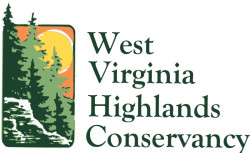By John McFerrin
The United States Forest Service is considering revising its rules that govern drilling for oil and gas in the National Forests.
Background
The United States Forest Service (a part of the United States Department of Agriculture) manages and protects 154 national forests, 20 grasslands and 1 prairie in 43 states and Puerto Rico. Locally these include the Monongahela National Forest, the George Washington National Forest, the Jefferson National Forest. The agency’s mission is to sustain the health, diversity, and productivity of the Nation’s forests and grasslands to meet the needs of present and future generations.
Although there has not been much oil and gas extraction in the local national forests in recent years, mineral extraction is a recognized use within the National Forest system. Approximately 44 national forests or grasslands have ongoing federal oil and gas interest or operations.
Another agency has a role as well. The Bureau of Land Management (a part of ate United States Department of the Interior) is in charge of leasing minerals for development and issues the drilling permit. It also regulates all downhole operations.
The Forest Service has veto power over the issuance of the drilling permit; no permit may be issued over its objections. It also must approve the issuance of a lease and the activities that disturb the surface.
There are currently regulations which describe in more detail the duties and obligations of the agencies involved and what each has to do.
What the Forest Service Wants to Do
There are no draft regulations that are currently proposed and made available to the public for comment. Instead, the Forest Service has announced that it intends to do new regulations. It hopes to address these topics:
- Streamlining and reforming the process used by the USDA Forest Service to identify National Forest System lands that the Bureau of Land Management may offer for oil and gas leasing;
- Updating regulatory provisions concerning lease stipulation waivers, exceptions and modifications;
- Clarifying procedures for review and approval of surface use plans of operations;
- Updating the language addressing the operator’s responsibility to protect natural resources and the environment;
- Clarifying language regarding inspections and compliance; and
- Addressing geophysical/seismic operations associated with minerals related matters in a manner that mirrors the Bureau of Land Management (BLM) regulations.
Now it is asking the public for its suggestions on how the regulations should change to address these topics. Depending upon the suggestions it gets and its own ideas, the Forest Service will then propose new regulations. These regulations will then be put out for public comment, possibly modified, and then made into final rules.
Changing the rules on how drilling in National Forests will, of course, have an environmental effect. Because of this, the Department of Agriculture (including the National Forest Service) has duties under the National Environmental Policy Act (NEPA) to determine the effect of this action on the environment. The Forest Service has announced that it intends to prepare either an environmental assessment or an environmental impact statement. It has asked for comments on the environmental effects of the rule change. (Jargon translation: An “environmental assessment” involves taking a look at the environmental effects, deciding they are no big deal, and that is the end of it. An environmental impact statement is a more detailed study).
Why Is the Forest Service Doing This
Short answer: we had an election.
Longer answer: On March 28, 2017, President Trump signed Executive Order 13783. After some platitudes on the importance of laws being followed, the environment being protected, etc. it articulated this policy:
(c) Accordingly, it is the policy of the United States that executive departments and agencies (agencies) immediately review existing regulations that potentially burden the development or use of domestically produced energy resources and appropriately suspend, revise, or rescind those that unduly burden the development of domestic energy resources beyond the degree necessary to protect the public interest or otherwise comply with the law.
The Executive Order goes on to lay out a long list of environmental policies, previous initiatives that should now be scrapped, etc. It is an interesting guide to what the Trump administration sees as its goal for environmental issues. Pertinent to the Forest Service is proposing here is this section:
Sec. 2. Immediate Review of All Agency Actions that Potentially Burden the Safe, Efficient Development of Domestic Energy Resources. (a) The heads of agencies shall review all existing regulations, orders, guidance documents, policies, and any other similar agency actions (collectively, agency actions) that potentially burden the development or use of domestically produced energy resources, with particular attention to oil, natural gas, coal, and nuclear energy resources. Such review shall not include agency actions that are mandated by law, necessary for the public interest, and consistent with the policy set forth in section 1 of this order.
In announcing its intention to change the rules on drilling in National Forests, the Forest Service relied upon this Executive Order. It goes on to say, “Several areas of the current regulations were identified where potential revisions may expedite energy-related projects by streamlining internal processes related to environmental review and permitting. Potential revisions may simplify the decision making process for oil and gas leasing, which would lead to quicker leasing decisions.”
Where we are in the process
With the possible exception of White House firings, nothing happens quickly in government. This is the beginning of the process to change the rules for drilling in National Forests. The Forest Service will receive comments on this proposal; it will write draft regulations. These draft regulations will be made available for public comment. The Forest Service will issue final regulations. It all takes time.
The process has, however, started. It will grind along until we eventually have regulations which will make it easier to get approval to drill in the National Forests.
